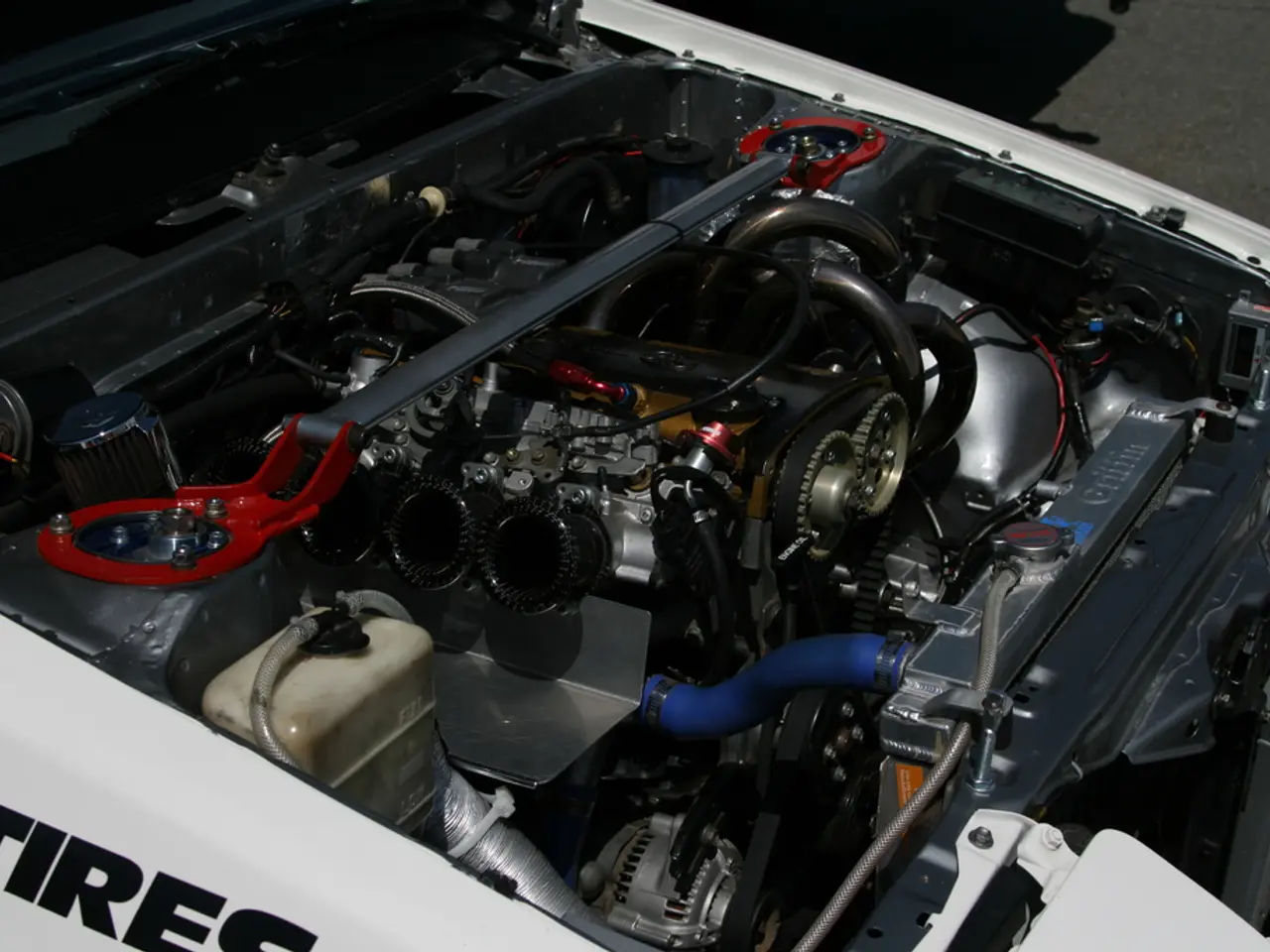Climate-conscious nitrogen fertiliser production is possible
================================================================================
In a groundbreaking development, researchers at the University of Bonn have developed a new method for producing ammonia, a foundation of nitrogen fertilizers used in large quantities in agriculture. This innovative approach, known as the Lithium-Mediated Nitrogen Reduction Reaction (LiNRR), could potentially solve a central problem in the production of climate-friendly nitrogen fertilizer.
The traditional Haber-Bosch process, currently used to produce ammonia, consumes a lot of energy from fossil sources and releases significant amounts of greenhouse gases. The LiNRR, on the other hand, aims to provide an electrified, low-temperature, and modular route to green ammonia, facilitating nitrogen fertilizer production in a climate-friendly manner.
The LiNRR system incorporates a palladium (Pd) membrane that supplies hydrogen directly from water splitting, rather than from decomposing alcohol solvents. This dual-reactor system decouples hydrogen generation from solvent degradation, enabling a cleaner, water-powered hydrogen source for ammonia formation at ambient conditions.
In the LiNRR, lithium ions are reduced to a metal layer that reacts with nitrogen from the air to form lithium-nitrogen compounds, producing ammonia. The palladium foil separates a water-free reaction zone from a water-based environment, enabling hydrogen to be released electrochemically from water.
The energy efficiency of the LiNRR is currently limited to around 25 percent. However, the new membrane technology represents a promising, climate-friendly alternative for ammonia fertilizer production by enabling the direct electrochemical reduction of nitrogen under mild, sustainable conditions.
The researchers, led by Professor Nikolay Kornienko from the Institute of Inorganic Chemistry at the University of Bonn, have successfully produced ammonia in a more climate-friendly way for the first time. They used special detection methods, including infrared spectroscopy and mass spectrometry, to confirm the successful transfer of hydrogen from water and the formation of ammonia.
The use of deuterium, a heavy hydrogen isotope, served as a marker in the experiment to verify that ammonia was formed directly from split water. This finding underscores the potential of the LiNRR as a climate-friendly alternative to the traditional Haber-Bosch process.
This article is categorized under Chemistry, Climate protection, and Agriculture. It is written by Nina Draese, a freelance journalist who specializes in topics such as automobiles, energy, climate, AI, technology, and the environment.
References:
- LiNRR: A Climate-Friendly Alternative for Ammonia Fertilizer Production
- Lithium-Mediated Nitrogen Reduction Reaction (LiNRR): A Promising Route to Green Ammonia
- Electrochemical Production of Ammonia Using a Palladium Membrane
- Water-Powered Ammonia Synthesis: A Step Towards Sustainable Fertilizer Production
- Lithium-Mediated Electrochemical Ammonia Synthesis Using a Palladium Membrane
Key Points:
| Aspect | Traditional Haber-Bosch | Lithium-Mediated NRR with Pd Membrane | |--------------------------|-----------------------------------|-------------------------------------------------| | Temperature & Pressure | High (~400-500°C, 150-300 atm) | Ambient or mild conditions | | Hydrogen Source | H₂ from fossil fuels (steam methane reforming) | Electrochemically split water (H₂O) via Pd membrane | | Ammonia Synthesis Mechanism | Direct catalytic conversion | Lithium metal chemically dissociates N₂; H-atoms supplied separately | | Environmental Impact | High CO₂ emissions | Low CO₂, uses renewable electricity and water |
- The new method for producing ammonia, called LiNRR, could potentially revolutionize health-and-wellness and agriculture by providing a more climate-friendly means of nitrogen fertilizer production.
- The use of smart-home devices and gadgets powered by renewable energy, in conjunction with the LiNRR technology, could contribute significantly to the reduction of greenhouse gas emissions associated with climate-change.
- In a world increasingly concerned with health-and-wellness and fitness-and-exercise, the primary energy source for hydrogen production in the LiNRR system—electrochemically split water (H₂O)—aligns with the importance of clean nutrition and preserving the environment.
- The LiNRR's electrified, low-temperature, and modular route to green ammonia offers innovative possibilities for the advancement of both environmental-science and technology.
- Future advancements in the LiNRR system and other related area of science and technology could pave the way for a healthier planet, allowing us to maintain a harmonious balance between our needs and the environment's health.




